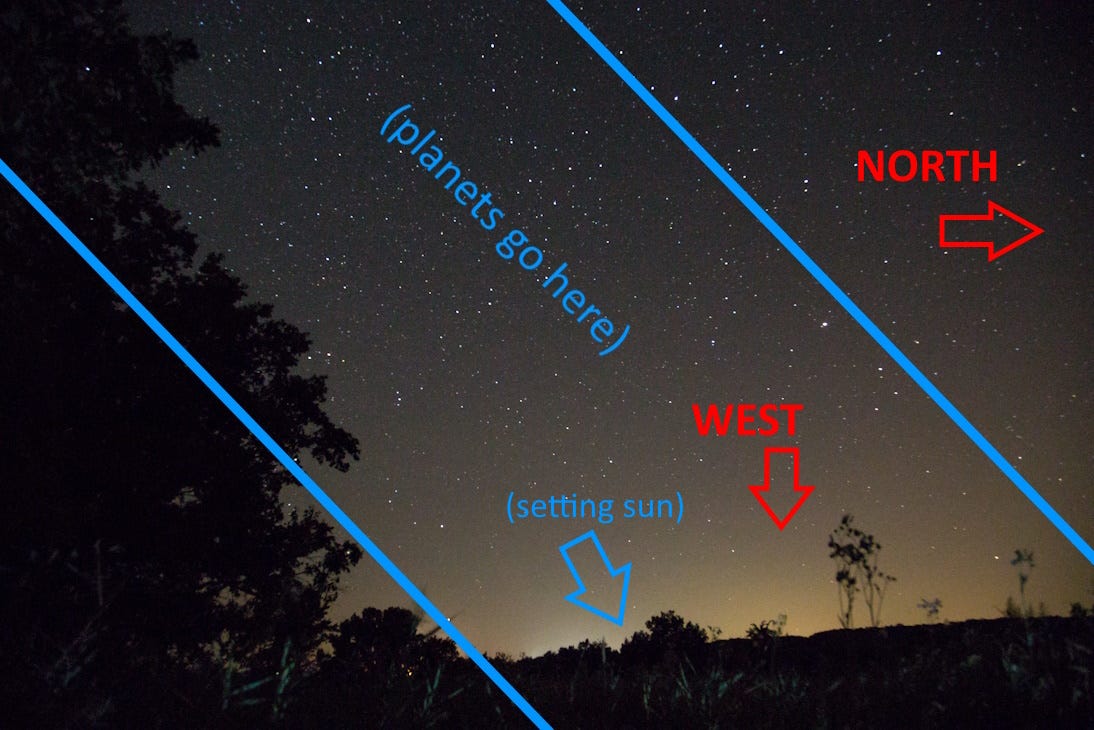Thanks to ephemerides and software, it is now actually possible for a person to spend their entire life learning astrology and practicing it without ever really spending any time looking up at the actual sky. I think that's unfortunate. I took to astrology early in life but, even before that, I was into astronomy. I loved looking out through my telescope to see things like the moons of Jupiter.
Now, thanks to the aforementioned ephemerides and software, there is no need to understand how these things look in person. I admit I have gotten lazy with that sort of thing, thanks to cloudy skies and light pollution and the fact that I usually live in a place surrounded by buildings that block half the sky from my perspective.
There are a couple of important concepts in astrology that don't make sense unless you have been observing the sky... and they are simply harder for me to explain in writing than if I was just standing outside next to you waving my hands around and pointing at things. so let me try to translate these things into something that will give you more of an experience that's like actually looking at the sky.
I've posted two charts from November 15 of this year in the city I live in: one for 4 PM (on the left) and the other one (on the right) for is for two hours later. Yes, that's right: It's November and I'm far enough north that the Sun has already set by 6 PM. Also, I've used Equal Houses -- which I don't normally do but it makes it a little easier to illustrate my point.
Take a look at the 4 PM chart on the left. the Ascendant and the Descendant at the nine o'clock position and the three o'clock positions represent the horizon. At 4 PM You'll see the Sun getting ready to set to the West and a sliver of the Moon chasing along behind it. And yes, since the East is on your left, this means you are looking South.
Now look at the 6 PM chart. You'll notice the Ascendant has changed from Taurus to Gemini. The Sun has set and that little sliver of Moon is about to go down as well. But: take a look at charts, specifically at the ring on the outside showing where the Signs are. Normally we think of Aries as first, Taurus as second, Gemini as third, and so on. But in this case, it appears that everything is in reverse order.
Is the sky moving backward? Well, not really. The fastest object we normally look at in astrology is the Moon. And you'll notice that in this particular two-hour period of time, it's only moved a little over a degree. That's because the Earth turns under the sky a lot faster than the sky moves around it.
(And by the way, if the way I'm phrasing any of this makes me sound like a Flat Earther please forgive me. I am not, I assure you.)
if you were standing there on my front lawn on November 15 of this year, and there weren't any buildings or artificial lighting cluttering up the view throughout the evening, you would see a little faint orange dot and a fainter yellow one, marching across the sky. Those would be Jupiter and Saturn in order. if you had a telescope, you'd be able to see Uranus, Neptune, and Pluto as well.
One more thing: the Sun, Moon, and planets don't just wander all over the place. They move within a band of the sky which lines up with the traditional twelve constellations that give the Signs their names. Astronomers call this band The Ecliptic Plane. Keep that in mind, it will be important later.
Forgive me now while I show off my awesome graphic design skills…
Got all that? I'm hitting my preferred word count. Let it sink in for a while until Part Two, when we add one more layer of detail... which will lead us to a couple of astrological concepts that some of us under-use... or aren't even aware of!







Hi, Matthew! That's a lovely little essay on looking at the night sky and so far a provocative setup for part two! Practical AND profound!